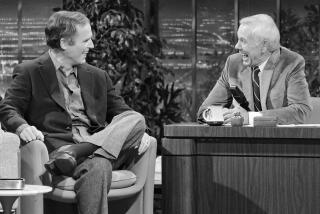No One Caved on Airport : Burbank city officials did a responsible job in crafting the agreement and should be proud to stand behind it. Now is the time to be a voice of reason.
- Share via
Sure, opposition to the draft agreement to build a new Burbank Airport terminal was expected. There’s a reason this war has dragged on for decades. But just because it’s predictable doesn’t make the opposition any less astounding, starting with the claim that the city of Burbank “caved in” to the Burbank-Glendale-Pasadena Airport Authority.
Caved in? Earth to opponents: Burbank won. Armed with a string of court victories, city officials had the upper hand in the negotiations.
But negotiation is a dirty word to die-hards. Now they think they can accomplish their aims through the blunt instrument of an initiative rather than through an agreement that’s taken years, millions of dollars, a dozen lawsuits--and cool heads--to craft.
Under the agreement these die-hards would so readily smash, the new terminal, like the old terminal, would have only 14 gates. The Airport Authority had originally wanted a terminal that could expand to 27 gates.
This is caving in?
Yes, the new terminal would have more square footage, but that’s not a conspiracy to bring in additional flights. Anyone who’s used the old terminal knows more room is needed for concessions, baggage and waiting areas. And yes, the airport could expand, over two phases, to 16 and then 19 gates, but only if the authority wins a mandatory nighttime flight curfew from the Federal Aviation Administration, caps the number of passengers and meets strict noise requirements. The authority already has agreed to phase out noisy Stage 2 jets over the next five years.
This is caving in?
Die-hard opponents want a terminal with no more than 14 gates, ever. And, most of all, they want a mandatory curfew before a new terminal can be built. But only the FAA--not the Airport Authority--can approve a mandatory curfew, and only after a lengthy study, which is already underway. There is a very real possibility the FAA will turn down the request and leave Burbank with a weaker bargaining position than it now holds. Not that die-hards bargain.
Burbank officials did bargain. At Burbank’s insistence, the Airport Authority already has agreed to a de facto curfew by agreeing to close the terminal at night. This is so novel a solution it may not fly--the airlines could file suit, the FAA could intervene--but it certainly has at least as good a chance as a mandatory curfew.
Far from caving in, Burbank city officials did a responsible job in crafting this agreement and should be proud to stand behind it. The current terminal, built in 1930 to accommodate biplanes, does not meet modern safety standards, a matter that doesn’t seem to register with die-hards such as Ted McConkey, the former Burbank city councilman who is spearheading the initiative drive. An honestly worded initiative would ask: Do you want a 14-gate terminal that’s too close to a runway or a 14-gate terminal in a safe location?
The voters have already spoken: They turned McConkey out in April, in large measure because they wanted a more rational voice on airport policy.
That may explain why McConkey no longer believes in representative government. As for current City Councilman Bob Kramer, who wants to put the agreement to an advisory vote because “it’s too important a decision for the five of us to make ourselves,” you have to wonder why he even ran for City Council. Voters elected Kramer and the other city councilors to represent them in delicate matters that require timing and finesse, that require, dare we say it, leadership. After the decades spent trying to settle this contentious issue, this is the time to be a voice of reason, not of indecision. This is the time to lead.
More to Read
Sign up for Essential California
The most important California stories and recommendations in your inbox every morning.
You may occasionally receive promotional content from the Los Angeles Times.













